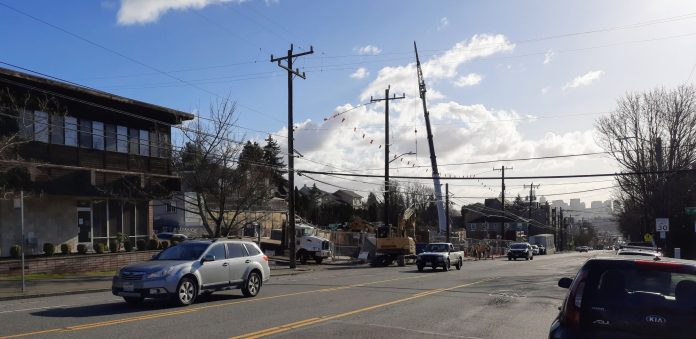An up-and-coming neighborhood sandwiched on the border of Fremont and Wallingford has added 2,000 apartments in a decade, and another wave is on the way with eight-story projects.
The Stone Way corridor has changed a lot over the past decade. Thousands of new apartments have replaced warehouses, parking lots, and low-slung retail. Trendy new restaurants, bars, and cafes have joined the old standby dive bars and greasy spoons–and I’ve feasted on the spoils as a local resident.
I wrote about that trend in 2015 and again 2018, and the area around Stone Way just keeps booming. Active construction projects would bring hundreds more homes into existence. Within a few blocks of Stone Way, about 2,000 new apartments have went in since 2012 or are under construction. Another 650 homes are in the design review and permitting phase, give or take.
Recent proposals have taken advantage of the Mandatory Housing Affordability (MHA) rezones that added an extra floor or two of zoning capacity along the corridor. Three eight-story proposals have materialized. One at 3665 Stone Way would add 242 homes, replacing the old Stone Way Electric warehouse, and another eight-story proposal at 3831 Stone Way would add 146 homes and replace a garden center and parking lot. An eight-story design just north of Fremont Brewing will bring 130 apartments, mostly small efficiencies, and replace two dilapidated single family homes. Small efficiencies will allow a five-story proposal at 4009 Stone Way to provide 128 homes on a relatively modest lot.
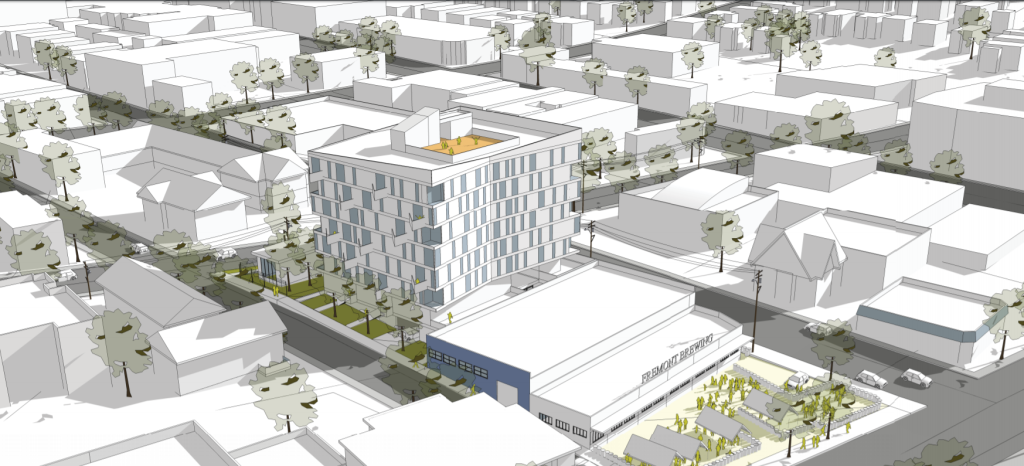
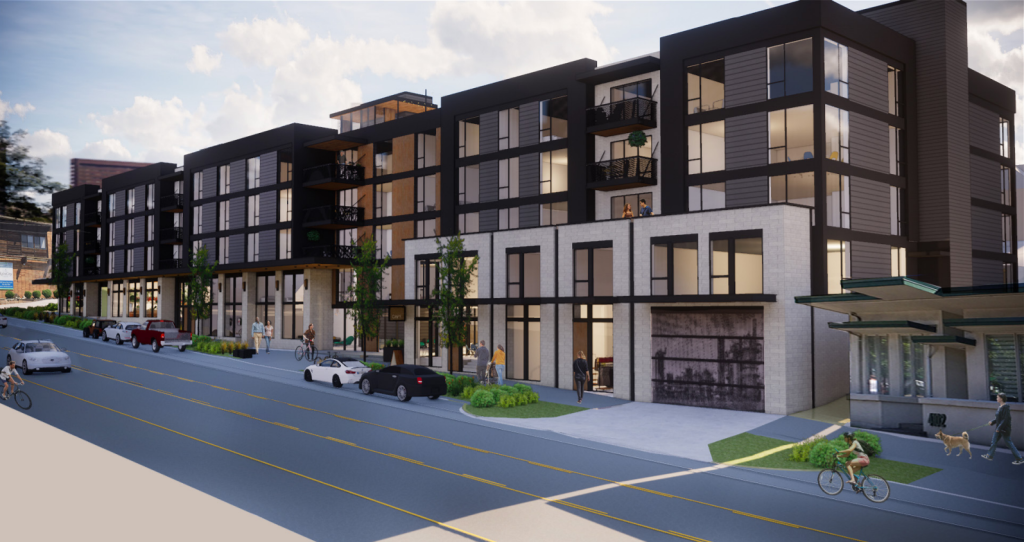
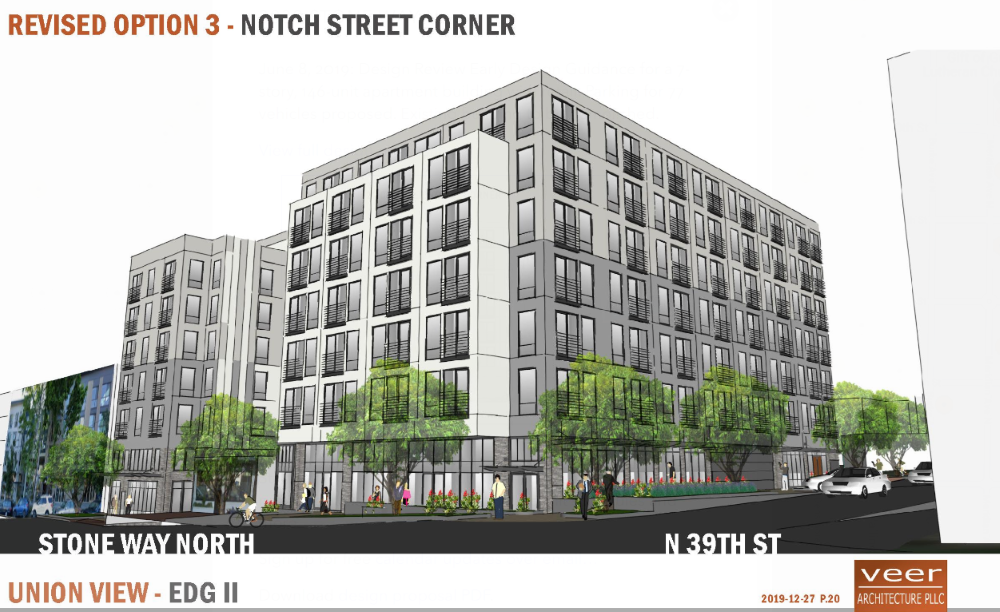
I mapped out recent and pending projects along Stone Way below, an area I’ve referred to as “Frelingford” much to the chagrin of Seattle old-timers. The dark grey shapes are buildings completed since 2012. Orange polygons denote projects under construction, and yellow ones are proposals in design review or are awaiting construction permits.
Why Stone Way is Booming
Why Stone Way has been the focal point of growth for the surrounding neighborhoods is one part design and one part happenstance. When crafting neighborhood plans back in 1994, as the state implemented the Growth Management Act, both the Wallingford Community Council and Fremont Neighborhood Council focused their zoned capacity in their urban villages to their edges along Aurora Avenue and Stone Way, which was a warehouse district then, with some single-family and multi-family housing mixed in. By contrast, the Wallingford Urban Village is very skinny to the east, tapering to a half block on each side along N 45th Street, sparing Craftsmen homeowners on the blocks to the north or south from the thought of apartments sprouting next door. The Fremont Urban Village, meanwhile, pretends like anything north of 40th Street doesn’t exist and has generated more office development than large apartment buildings. In both cases, the largest residential buildings are zoned for the Stone Way corridor. Funneling growth to the fringe allowed the respective neighborhood groups to put less zoned capacity in their cores and still meet their growth targets on paper.
One of the benefits of the extensive multifamily growth in the Stone Way corridor is it has increased the diversity of neighborhood demographics in terms or race, age, and wealth. While the census tract to the east (the core of Wallingford) has a median age of 38.3, a median household income of almost $120,000, is 68% single family homes, and 80% White–all higher than the citywide and countywide median–the two Stone Way census tracts (50 and 54) hover just above 30 years old, about 70% apartments (or other multifamily), and a median household income that is about $15,000 lower. While Wallingford was 85% White (non-Hispanic) in the 2010 census, the Stone Way tracts were 73% and 74% White, as of the 2019 American Community Survey figures. The density is also higher: roughly 15,000 versus 10,000 residents per square mile.
While the whole neighborhood could be growing and diversifying in this way, instead much of the rest is shielded by single family zoning. For some Wallingford homeowners, restrictive zoning is not enough; they are seeking to get their single family homes listed on the National Historic Registry in an attempt to stymie attempts to repeal apartment bans and add another hurdle to redevelopment. Mike Eliason traced the lineage back to racial covenants that barred people of color from owning homes in North Seattle. Efforts to freeze Wallingford in amber inspired pro-housing activists to organize a counter-movement with a petition opposing the historic designation. That petition had more than 900 signatures at time of publication.
Stone Way’s growth in context
The growth in the Stone Way corridor is fairly dramatic, but plenty of other Seattle neighborhoods have seen similar or larger booms over the past decade. Back in 2017, Seattle in Progress tallied nearly 10,000 homes in development in Denny Triangle, more than doubling the total for the area. The U District has seen a frenzy of development activity ahead of light rail arrival, as has Roosevelt and to a lesser extent Northgate. First Hill, Belltown, Uptown, Ballard, Columbia City, Capitol Hill, the Central District, North Rainier, and Lake City look like pincushions in Seattle in Progress, given the number of proposals under construction or in the pipeline.
The sum total is that Seattle is averaging more than 10,000 homes per year over since 2017 (though the 2020 may temper that a bit due to Covid disruptions.) It’s still not enough to keep pace with demand, but it blows away the pace of apartment construction in the suburbs. Since 2016, Bellevue has led the suburbs with 3,932 new apartments, according to RentCafé — note that they only count buildings of at least 50 units where a final certificate of occupancy has been issued. Tacoma clocked in at 1,482, Lynnwood at 1,010, Kirkland at 969, and both Everett and Bothell each had 957 apartments, using the same timeframe and parameters. Since Bellevue, Tacoma, and Everett are designated as “principal cities” rather than suburbs in the definitions RentCafé uses, Lynnwood got the headlines for “fastest growing suburb.”
Lynnwood’s 1,010 new apartments in five years, though commendable, is basically matched by this half square mile area I’ve described sandwiched between two neighborhoods known for blocking growth rather than embracing it. Overall, Seattle has added 35,783 housing units since 2015, according to the City’s Housing Growth Report, and has another 19,718 homes under construction.
Construction photo tour
While some pundits claim people are headed for the (suburban) hills and abandoning Seattle, the continued construction activity across the city suggests otherwise–at least that developers and their investors are betting otherwise. Another hot take has been that people are clamoring for more space and parking due to pandemic living, but the low parking ratios along the corridor again suggest builders have faith this isn’t the only story and dynamic at play.
I speak for myself when I say keep your garage and give me a bevy of restaurants, cafes, stunning parks, the Burke-Gilman trail all within a 10-minute walk. But it seems like plenty of other folks are ready to take that trade as well. Here are the projects rising along Stone Way as we speak.
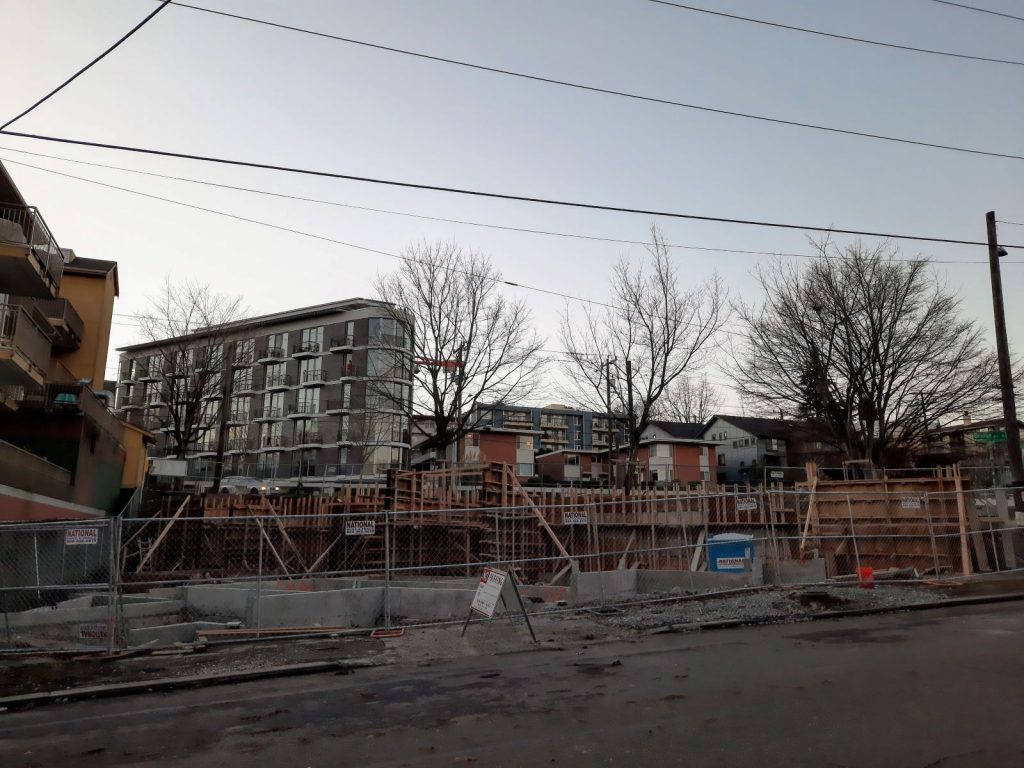

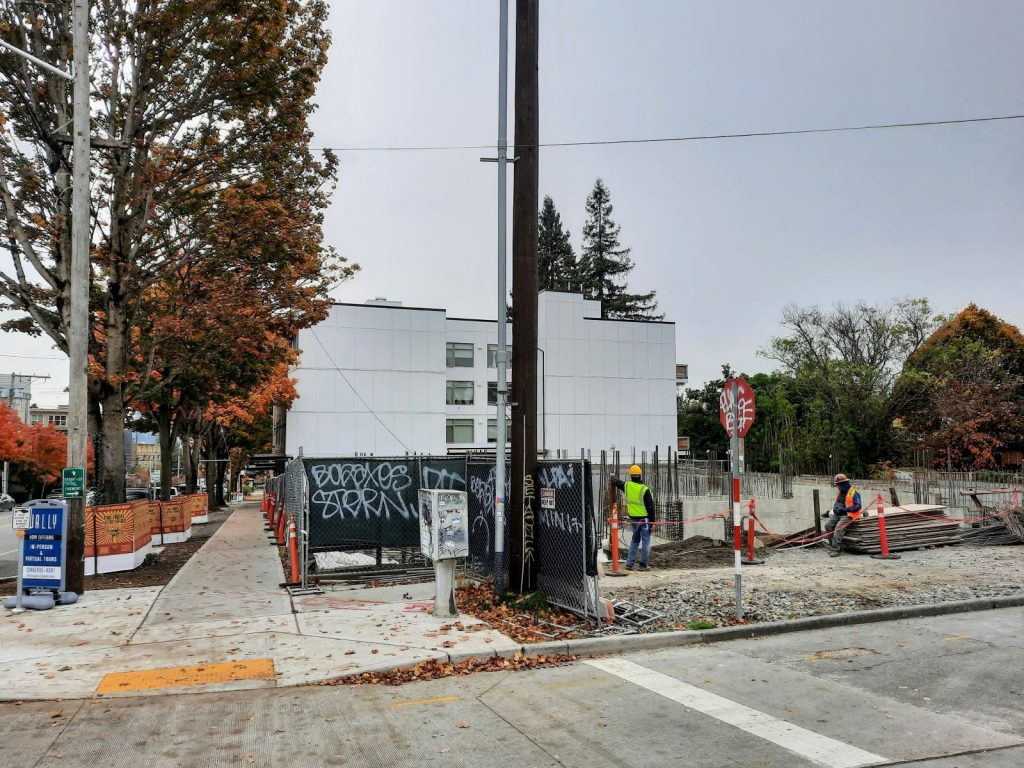
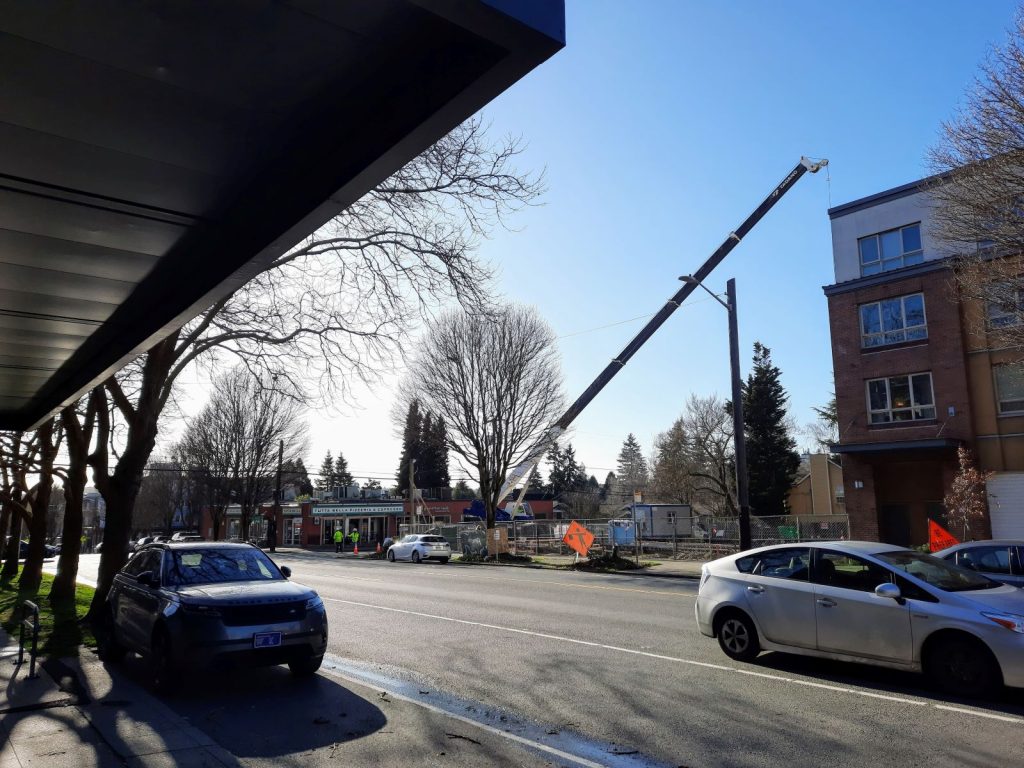
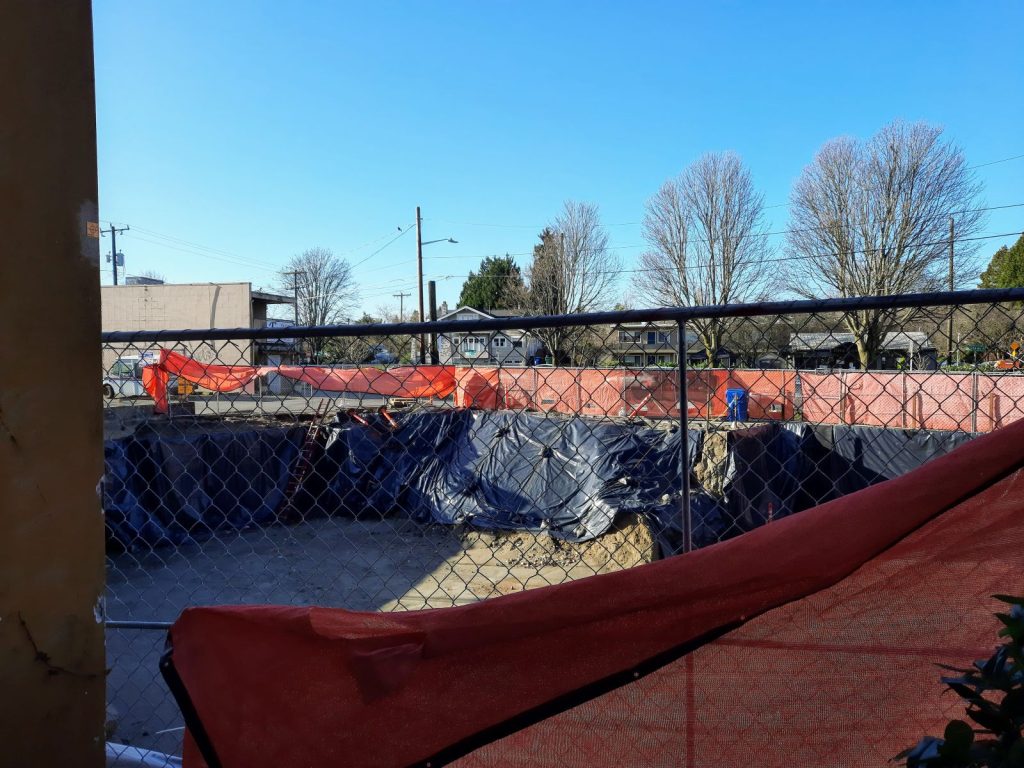
At a glance
- 3421 WOODLAND PARK AVE N – 122 apartments, 10 parking stalls
- 3524 STONE WAY N – 100,000 square feet office space, 148 parking stalls
- 3665 STONE WAY N – 243 apartments, eight stories, 77 parking stalls
- 3831 STONE WAY N – 145 apartments, eight stories, 75 parking stalls
- 3320 CLAREMONT AVE S – 35 apartments, no parking
- 4035 STONE WAY N – 49 apartments, 33 parking stalls
- 4106 STONE WAY N – 118 apartments, 59 parking stalls
- 4201 STONE WAY N – 95 apartments, 22 parking stalls (formerly 4201 STONE WAY N – 51 apartments, 4 parking spots)
- 4453 STONE WAY N – 42 apartments, 15 parking stalls
- 4612 STONE WAY N – 40 small efficiency apartments, 0 parking
- 909 N 39TH ST – 153 apartments, 58 parking stalls. (This is an affordable housing project)
- 3926 AURORA AVE N – 120 hotel rooms, 121 parking stalls
Doug Trumm is publisher of The Urbanist. An Urbanist writer since 2015, he dreams of pedestrian streets, bus lanes, and a mass-timber building spree to end our housing crisis. He graduated from the Evans School of Public Policy and Governance at the University of Washington in 2019. He lives in Seattle's Fremont neighborhood and loves to explore the city by foot and by bike.


